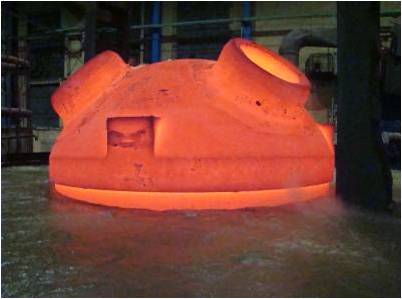What is quenching?
The quenching of steel is to heat the steel to a temperature above the critical temperature Ac3 (hypoeutectoid steel) or Ac1 (hypereutectoid steel), hold it for a period of time to make it fully or partially austenitized, and then cool the steel at a rate greater than the critical cooling rate. Fast cooling to below Ms (or isothermal near Ms) is a heat treatment process for martensite (or bainite) transformation. Usually, the solution treatment of aluminum alloy, copper alloy, titanium alloy, tempered glass and other materials or the heat treatment process with rapid cooling process is called quenching.

The purpose of quenching
1. Improve the mechanical properties of metal materials or parts. For example: improve the hardness and wear resistance of tools, bearings, etc., improve the elastic limit of springs, and improve the comprehensive mechanical properties of shaft parts.
2. Improve the material properties or chemical properties of some special steels. Such as improving the corrosion resistance of stainless steel and increasing the permanent magnetism of magnetic steel.
When quenching and cooling, in addition to the reasonable selection of quenching medium, there must be a correct quenching method. Commonly used quenching methods include single-liquid quenching, two-liquid quenching, graded quenching, austempering, and partial quenching.
The steel workpiece has the following characteristics after quenching
1. Unbalanced (ie unstable) structures such as martensite, bainite, and retained austenite are obtained.
2. There is a large internal stress.
3. The mechanical properties cannot meet the requirements. Therefore,steel workpieces are generally tempered after quenching.
Read more: Steel pipe heat treatment process-Normalizing













 Eastern Steel Manufacturing Co.,Ltd not only improve product production and sales services, but also provide additional value-added services. As long as you need, we can complete your specific needs together.
Eastern Steel Manufacturing Co.,Ltd not only improve product production and sales services, but also provide additional value-added services. As long as you need, we can complete your specific needs together.










